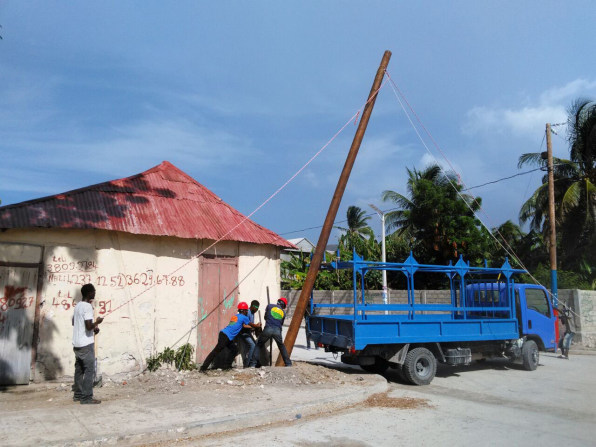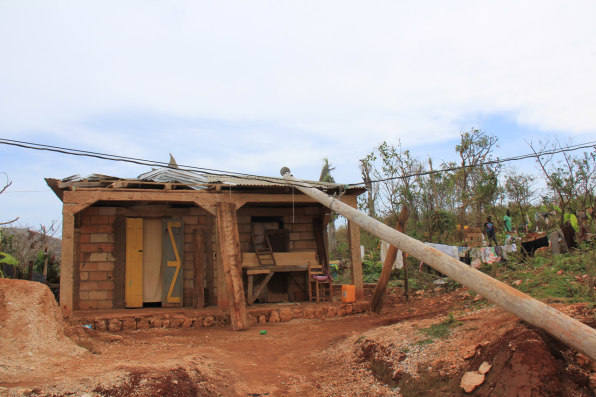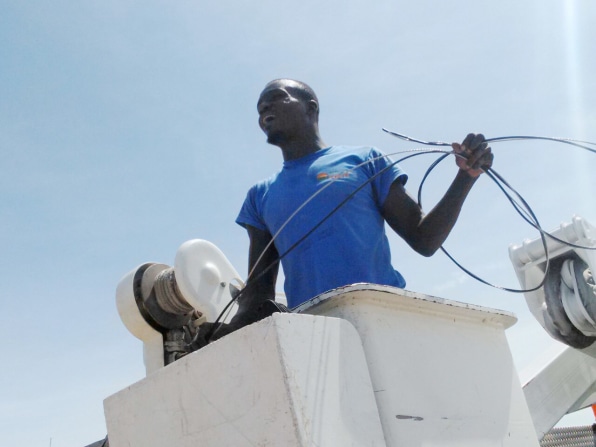Originally published on FAST COMPANY –
“In six months, we built from scratch the entire electrical grid of a town of 5,000 people,” says Andy Bindea, founder and president of Sigora International.
By the end of 2017, the company plans to get electricity to 300,000 people in throughout Haiti. By the end of 2018, they hope to reach a million people. It’s a massive task: As the poorest country in the Western Hemisphere, roughly 75% of Haiti’s population is off the grid now. For those who do have power, it often only works two to six hours a day.

Sigora calls its system a “micro-utility.” Unlike micro-grids, where single small grids stand alone, the system clusters several micro-grids together. By connecting to a centralized source of power–though on a tiny scale compared to a traditional utility–the system makes renewable power about 33% cheaper than it would be in a typical micro-grid.
The company is currently building a system for nine communities around Môle-Saint-Nicolas. Temporarily, the first micro-grid is running on diesel generation, but as soon as a solar and wind plant is completed, the system will be 100% renewable.
“All of the renewable energy generation for all of these nine different towns is placed in one location,” says Bindea. “We’re able to operate it properly and maintain it properly and have 24/7 maintenance staff in that one location rather than nine different locations. It allows us to achieve lower per unit installed cost of solar.”

Because each of those towns has its own micro-grid, with a backup generator that lets it work independently if needed, the system is also more resilient in disasters.
Sigora also trained a large staff of local technicians. After Hurricane Matthew–when trees and flying debris took out power lines–the company was able to restore power in 55 hours, long before the rest of the country.
The grid is designed to quickly scale up and can deliver 1,800 watts to each home. That’s enough to power large appliances. “When people talk about electrification, they don’t always make the distinction between, ‘here’s a kit to provide a light and charging a cell phone,’ versus what we’re providing,” he says.

Each home has a wired smart meter that prevents theft of power, helping keep the costs low for everyone. Customers pre-pay, or the power is shut off, so the company doesn’t have to expend resources trying to get people to pay bills. The end result is cheaper for customers, Bindea says, than buying the diesel or candles they bought in the past.
In the pilot project in Môle, the company has been collecting revenue since March, and they say they’re breaking even now, without having reached scale. “The microutility will be profitable as soon as the project is complete,” he says. “That is what we believe is the key to sustainability.”
The company thinks the system is proof that grids can run fully on renewable power, contrary to popular belief. After Haiti, they plan to build similar networks in Ghana, DRC, Zimbabwe, Kenya, Eritrea, the Phillipines, and Malawi.
“We have the potential to leapfrog fossil fuel electrification and go straight into 100% clean, reliable electricity,” Bindea says. “And just eliminate this continuous battle between energy access and the potential climate change effects that come with energy access for the next 1.2 billion people.”
